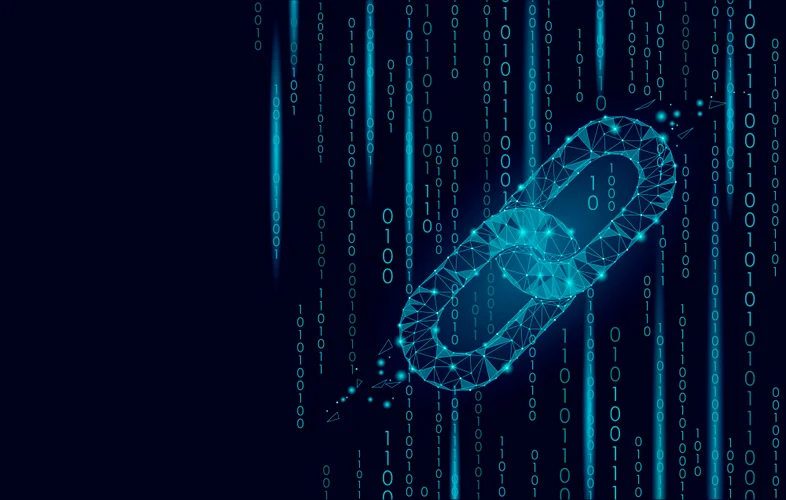Why Recurrent Neural Networks Remember? By Chinmay Bhalerao Information And Beyond
The data in recurrent neural networks cycles by way of a loop to the center hidden layer. The gradient computation includes performing a ahead propagation move moving left to right through the graph proven above adopted by a backward propagation cross shifting proper to left via the graph. The runtime is O(τ) and can’t be reduced by parallelization because the forward propagation graph is inherently sequential; each time step could also be computed only after the previous one. States computed within the rnn applications ahead cross should be stored until they’re reused during the backward cross, so the reminiscence price can be O(τ).
Demystifying Artificial Neural Networks (anns): A Newbies Guide To Navigating Machine Studying In Healthcare
A more technical rationalization is that we use the standard Limitations of AI Softmax classifier (also commonly known as the cross-entropy loss) on every output vector simultaneously. The RNN is skilled with mini-batch Stochastic Gradient Descent and I like to use RMSProp or Adam (per-parameter adaptive learning price methods) to stablilize the updates. If coaching vanilla neural nets is optimization over functions, coaching recurrent nets is optimization over applications. Time series knowledge is a sequence of observations recorded over time, usually utilized in fields like finance and climate forecasting.

Recurrent Neural Networks (rnns)
However, RNNs’ weak spot to the vanishing and exploding gradient issues, together with the rise of transformer fashions such as BERT and GPT have resulted in this decline. Transformers can capture long-range dependencies rather more effectively, are simpler to parallelize and perform better on duties similar to NLP, speech recognition and time-series forecasting. RNNs do not require a fixed-size enter, making them versatile in processing sequences of varying lengths. This is particularly helpful in fields like natural language processing where sentences can vary significantly in size. Modern transformers utilized in GPT are a lot more durable to increase in size by way of enter length as the memory demands for transformer input scaling are quite higher. RNNs are notably adept at handling sequences, similar to time series data or text, as a outcome of they course of inputs sequentially and maintain a state reflecting previous data.
- Incorporating consideration mechanisms refines RNN predictions by prioritizing related time steps or options, especially in longer sequences.
- For all we know we might be doing training in a seemingly-efficient means that utterly precludes intelligence really emerging.
- If you only track the date as a characteristic, you miss that some events observe not just the day-of-year pattern but also holiday patterns.
Regularly Requested Questions (faqs) On Recurrent Neural Networks
This Neural Network is called Recurrent as a result of it could possibly repeatedly perform the same task or operation on a sequence of inputs. We create a easy RNN model with a hidden layer of 50 models and a Dense output layer with softmax activation. We already know how to compute this one as it’s the similar as any easy deep neural network backpropagation. This perform defines the complete RNN operation, where the state matrix [Tex]S[/Tex] holds each component [Tex]s_i[/Tex] representing the network’s state at each time step [Tex]i[/Tex]. MLPs include a quantity of neurons arranged in layers and are sometimes used for classification and regression. A perceptron is an algorithm that may learn to perform a binary classification task.

RNNs characterize a major leap in our capability to mannequin sequences in knowledge. This helps us predict future events, perceive language, and even generate textual content or music. In an age the place our knowledge is increasingly temporal and sequential, RNNs assist make sense of this complexity. Within BPTT the error is backpropagated from the last to the primary time step, while unrolling all the time steps.
While coaching a neural network, if the slope tends to grow exponentially instead of decaying, that is called an Exploding Gradient. This downside arises when massive error gradients accumulate, leading to very giant updates to the neural community mannequin weights in the course of the training process. Recurrent Neural Networks allow you to mannequin time-dependent and sequential information problems, such as inventory market prediction, machine translation, and text generation. You will discover, nonetheless, RNN is hard to train because of the gradient drawback. It’s used for general machine learning problems, which has a single enter and a single output.
Modern libraries present runtime-optimized implementations of the above functionality or permit to hurry up the sluggish loop by just-in-time compilation. We rely on information to inform decision-making, drive innovation, and maintain a aggressive edge. However, information is not static, and over time, it may possibly bear important changes that impact its high quality, reliability, and usefulness. Understanding the nuances of those changes is essential when you goal to… Data quality is more than just a buzzword—it’s the foundation of robust decision-making and the success of your organization. At its core, information quality refers back to the accuracy, consistency, completeness, and reliability of your organization’s information.
So, because I am given the sequence of economic knowledge as an input, I thought that RNN would be higher. On the opposite hand, I assume that if I can match the info into some structure, I can practice with DNN significantly better as a result of the training part is easier in DNN than RNN. For instance, I may get last 1-month information and maintain 30 inputs and predict 31’th day whereas using DNN. My first query is in regards to the proper utilization of RNN or DNN in this problem. We’ve learned about RNNs, how they work, why they’ve turn into a giant deal, we’ve skilled an RNN character-level language model on several fun datasets, and we’ve seen where RNNs are going.
But much like universal approximation theorems for neural nets you shouldn’t learn an excessive amount of into this. Applying RNNs to real-world time collection information involves a complete course of. It begins with proper knowledge preprocessing, designing the RNN structure, tuning hyperparameters, and training the model. Evaluation metrics and visualization are used to assess efficiency and guide improvements, addressing challenges like non-stationarity, missing timestamps, and more. Based on the analysis, you’ll be able to determine potential enhancements to the model. These might embrace additional tuning hyperparameters, adjusting the architecture, or exploring completely different preprocessing techniques.
This implementation is from Andrej Karparthy nice post constructing a personality stage RNN. In a typical RNN, one enter is fed into the community at a time, and one output is obtained. But in backpropagation, you make the most of this moreover as a outcome of the earlier inputs as enter. This is often called a timestep and one timestep will contains many statistic knowledge factors getting into the RNN simultaneously. All 5 example character models below were trained with the code I’m releasing on Github.
A. A recurrent neural community (RNN) processes sequential data step-by-step. It maintains a hidden state that acts as a memory, which is updated at each time step using the enter data and the previous hidden state. The hidden state allows the community to seize data from past inputs, making it appropriate for sequential duties. RNNs use the same set of weights throughout all time steps, permitting them to share information all through the sequence. However, conventional RNNs suffer from vanishing and exploding gradient problems, which can hinder their ability to capture long-term dependencies.

An RNN could be used to predict day by day flood levels primarily based on past daily flood, tide and meteorological information. But RNNs can also be used to solve ordinal or temporal issues such as language translation, natural language processing (NLP), sentiment evaluation, speech recognition and image captioning. By sharing parameters throughout totally different time steps, RNNs keep a consistent strategy to processing every factor of the input sequence, no matter its place.
The back-propagation algorithm utilized to the unrolled graph with O(τ) cost is called back-propagation through time (BPTT). Because the parameters are shared by all time steps in the network, the gradient at every output relies upon not solely on the calculations of the present time step, but additionally the earlier time steps. Recurrent neural networks (RNNs) are a sort of artificial neural network designed to process sequential information through the use of an inner reminiscence to recall previous info. Long Short-Term Memory (LSTM) and Gated Recurrent Unit (GRU) models are RNN variations that mitigate the vanishing gradient problem.
I can envision a type of NN where every mannequin „weight” is actually a frequency component, as a result of Fourier Series can symbolize any arbitrary operate in this way. There has after all already been related research accomplished by others along these traces. If you consider the recurrent-style architectures as IIR filters and feedforward-only architectures as FIR filters, you will probably find many parallels. This model is significantly extra philosophically interesting, scalable and efficient, but unfortunately additionally it is non-differentiable.
Transform Your Business With AI Software Development Solutions https://www.globalcloudteam.com/ — be successful, be the first!

Sign In